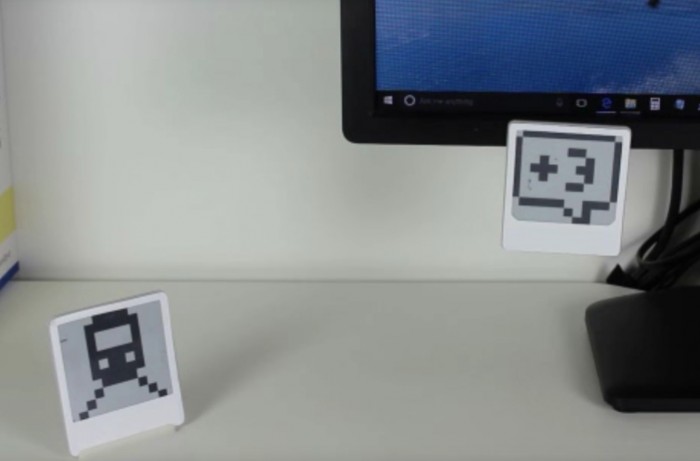This E-Ink Post-It Never Needs to Be Charged
Imagine tossing all of the reminders scattered across your desk and instead having your phone send a to-do list to a scrap of e-paper that never needs charging. That’s essentially what Microsoft Research has done with this cute Polaroid-esque display.
According to a paper presented at the User Interface Software and Technology conference this week, the device uses a small photovoltaic cell, which harvests energy from ambient light, to power a simple e-ink display and low-energy Bluetooth chip. E-ink, now more than a decade old, is particularly well-suited to such applications because it only uses power when it changes what’s shown on the display.
Speaking to New Scientist, Tobias Grosse-Puppendahl from Microsoft Research said that the device “could be used just like a Post-It note [that] could be reused, synchronized with notes in other locations, and could be programmed to show up-to-date information.” When the lighting conditions in the room are optimal, the device is able to receive an update from a computer or smartphone and refresh its display every minute. Hopefully that’s faster than the accretion rate of your to-do list.

There’s growing activity in the development of devices that can gather power from their surroundings. At this year’s EmTech MIT 2016, Shyam Gollakota, an assistant professor at the University of Washington, showed off a contact lens that’s able to connect to other devices using Wi-Fi despite not containing a power supply. Its secret is a new approach which harnesses energy from radio signals in the air.
Such advances will be required if the much-fabled Internet of things is to prove genuinely useful. They might even make you more organized along the way.
(Read more: Microsoft Research, New Scientist, “Power from the Air,” “This Contact Lens Will Kick-Start the Internet of Disposable Things,” “Can Electronic Devices Harvest Energy on Their Own?”)
Keep Reading
Most Popular
Large language models can do jaw-dropping things. But nobody knows exactly why.
And that's a problem. Figuring it out is one of the biggest scientific puzzles of our time and a crucial step towards controlling more powerful future models.
The problem with plug-in hybrids? Their drivers.
Plug-in hybrids are often sold as a transition to EVs, but new data from Europe shows we’re still underestimating the emissions they produce.
Google DeepMind’s new generative model makes Super Mario–like games from scratch
Genie learns how to control games by watching hours and hours of video. It could help train next-gen robots too.
How scientists traced a mysterious covid case back to six toilets
When wastewater surveillance turns into a hunt for a single infected individual, the ethics get tricky.
Stay connected
Get the latest updates from
MIT Technology Review
Discover special offers, top stories, upcoming events, and more.